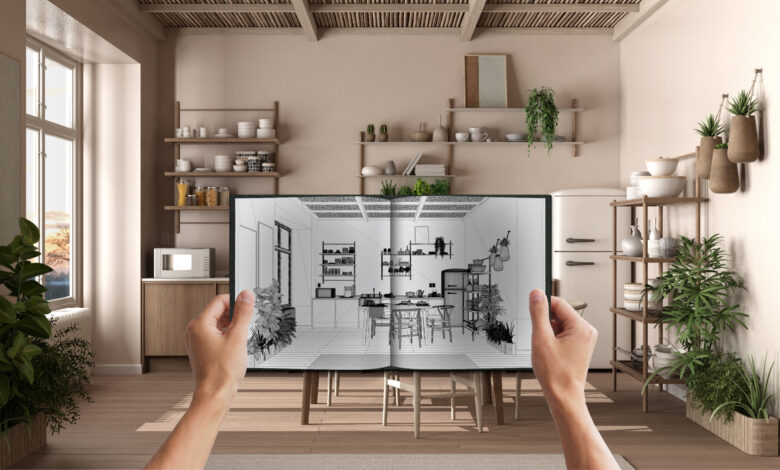Why Hire an Interior Designer in 2025?

In 2025, design is about more than just making a room look nice. It’s about creating spaces that work for the people who use them every day. Whether it’s a private residence, a care facility, or a commercial space, thoughtful interiors improve wellbeing, efficiency, and quality of life.
Hiring a professional interior designer is not just a luxury, it’s a smart investment. As buildings adapt to modern lifestyles, sustainability goals, and accessibility standards, having an expert on your side makes all the difference.
If you’re upgrading a residential care home or planning a new healthcare space, Care Home Interior Designers in Manchester can bring expertise that helps you meet today’s demands while futureproofing your environment.
Designs That Prioritise People
Great interiors start with the people who use them. In 2025, the focus is on user-first design, spaces that support comfort, safety, and emotional wellbeing. Whether it’s a quiet bedroom in a care home or a vibrant communal area, every corner should feel purposeful.
Interior designers understand how colours, materials, and layout choices affect mood and behaviour. They create environments that encourage interaction, reduce stress, and promote independence, especially in healthcare and care home settings.
Meeting Evolving Regulations
Interior spaces in 2025 are subject to increasingly complex building and safety regulations. From fire-retardant materials to dementia-friendly layouts, compliance is critical. Mistakes can lead to costly redesigns, safety issues, or failed inspections.
Professional designers keep up with all the latest standards. They know which finishes meet safety codes, how to plan for mobility needs, and how to integrate accessibility without sacrificing style.
Futureproofing the Space
Trends change, but good design lasts. A skilled interior designer doesn’t just follow what’s popular, they plan with flexibility and longevity in mind. That means creating layouts that can evolve with your needs, choosing timeless colours, and using quality materials that won’t need replacing next year.
Designing for the future is especially important in settings like care homes, where changing patient needs or regulations can affect how a space is used.
Creating a Cohesive Look
Consistency in design brings calm and order to a space. A professional designer ensures that all elements, flooring, wall colours, lighting, furniture, and signage, work together. This avoids the patchwork effect that can happen when each part is done separately.
A cohesive look isn’t just about style. It can improve wayfinding in large spaces, reduce visual clutter, and create a more welcoming environment for residents, staff, and visitors.
Saving Time and Money
Many people assume that hiring an interior designer adds to the budget. In reality, it can save you money. Designers know where to find the best materials at the right price, avoid costly design mistakes, and streamline the renovation process.
They manage suppliers, timelines, and installations, so you don’t have to. That means fewer delays, better quality control, and less stress for the client.
Access to Better Resources
Interior designers have access to a wide network of trusted suppliers, contractors, and tradespeople. They can source specialised materials and bespoke furniture that aren’t available on the high street. For care homes, this might include contract-grade fabrics, anti-bacterial coatings, or custom furniture for limited mobility.
This access ensures a higher level of finish and durability, which is essential in high-use environments.
Boosting Property Value
Well-designed interiors increase the market value of any property. Whether it’s a private home or a commercial facility, a polished, professionally finished interior stands out. It photographs better, shows better, and offers more long-term value to owners and tenants.
For care homes and healthcare providers, good design also boosts occupancy rates and improves first impressions with potential residents and families.
Improving Staff Efficiency
In healthcare and assisted living environments, layout affects workflow. A poorly planned interior can lead to unnecessary walking, communication issues, or access problems during emergencies. Designers understand how to plan efficient pathways, storage areas, and zones to support staff duties.
This attention to operational design helps reduce fatigue, speed up response times, and improve overall productivity for employees.
Supporting Mental and Physical Health
There’s a growing understanding in 2025 that design impacts wellbeing. Natural light, calming colours, acoustic control, and intuitive layouts can all reduce stress and promote better health outcomes.
Interior designers use evidence-based techniques to create environments that support both mental and physical health. This is especially valuable in care homes, where comfort and familiarity are key to resident satisfaction.
Tailored to Your Needs
No two spaces are alike. A good interior designer doesn’t offer cookie-cutter solutions. Instead, they assess your goals, your users, and your building, and create a plan that fits.
In care settings, this could mean designing memory care areas with clear visual cues, or creating social spaces that balance privacy with interaction. Every decision is tailored to support your objectives.
Conclusion
In 2025, hiring an interior designer is more than a style decision, it’s a strategic investment. From improved comfort and compliance to better staff efficiency and long-term value, the benefits go far beyond aesthetics.
If you’re planning a renovation or new build, an expert designer can help you get it right the first time. With their guidance, you’ll create spaces that not only look good but also support the people who live and work in them, now and in the future.



